

Oct. 30, 2010
3601
Prom Dress. 1995
Most of us, post-Soviet women had our prom dresses "made out of curtain" or so it looked. And it meant the same thing the curtain dress meant for Scarlett O'Hara: it symbolized our will to survive.
Oct. 28, 2016
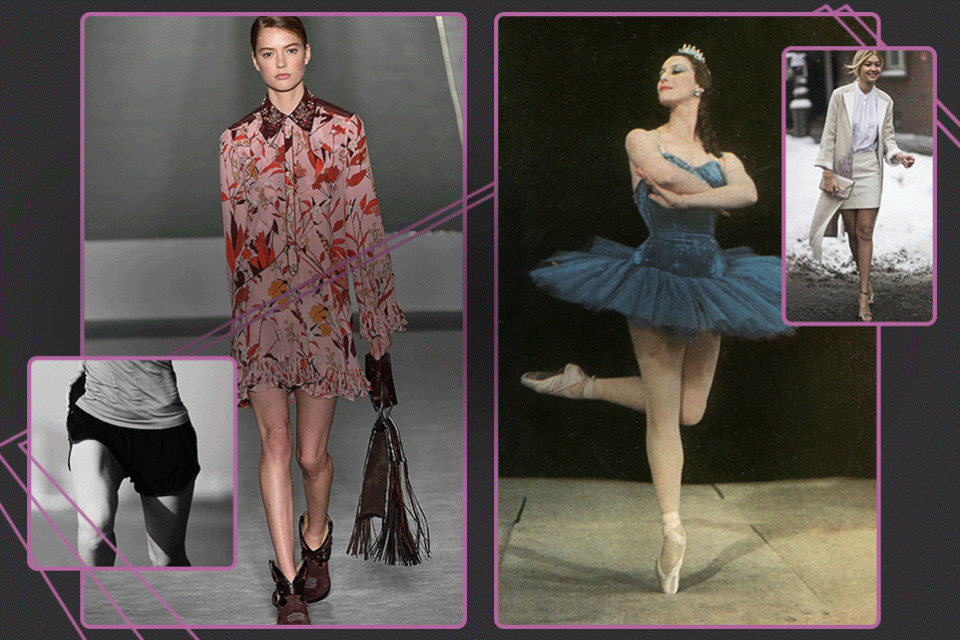
Your fitness routine can only go as far.. Love your thighs and start living.
Years ago, when I was a budding stylist, I was blessed with an online fellow-Russian friend, a garment construction industry old-timer, who decided I was worthy of gaining her impressive expertise. One of the things I remember catching right away was the jargon she mentioned they used in the old days to describe legs. Basically, she said that most legs fall into one of two categories: ballerina legs or marathoner legs. Today I will take the liberty of developing this concept in hopes of helping many women embrace their bodies and live happily ever after.
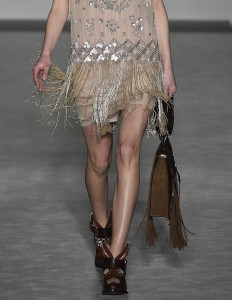 Legs these days get a lot of scrutiny and the expectations are rigid. Most sophisticated, upscale fashion publications have replaced prosaic ‘legs’ with the fancier ‘gams.’ Paradoxically, this nip into suave French-Italian vocabulary masks the fashion industry’s refocus from subtle ankles to earthier thighs. This is where the problem kicks in. ‘Beautiful legs’ these days basically implies lithe thighs. No lithe thighs, no beautiful legs. In its confinement, the current situation mirrors what women had some two centuries ago when ‘beautiful legs’ meant a mere peek of ankle beneath petticoats. But not everyone is keen on constant comparative analysis of women’s fashions through the centuries. Instead we head to the gym to work on our legs and very often find we did not get close to the sought after image even after months of hard work. Some thighs just won’t comply. This will happen to what my friend called “ballerina legs” and what I want to present to you today as a fouetté thigh. A fouetté thigh will never turn into a marathoner’s gam.
Legs these days get a lot of scrutiny and the expectations are rigid. Most sophisticated, upscale fashion publications have replaced prosaic ‘legs’ with the fancier ‘gams.’ Paradoxically, this nip into suave French-Italian vocabulary masks the fashion industry’s refocus from subtle ankles to earthier thighs. This is where the problem kicks in. ‘Beautiful legs’ these days basically implies lithe thighs. No lithe thighs, no beautiful legs. In its confinement, the current situation mirrors what women had some two centuries ago when ‘beautiful legs’ meant a mere peek of ankle beneath petticoats. But not everyone is keen on constant comparative analysis of women’s fashions through the centuries. Instead we head to the gym to work on our legs and very often find we did not get close to the sought after image even after months of hard work. Some thighs just won’t comply. This will happen to what my friend called “ballerina legs” and what I want to present to you today as a fouetté thigh. A fouetté thigh will never turn into a marathoner’s gam.
The defining characteristic of marathoner’s gams is lithe thighs with a suave dent on the inner side of the hip, which makes the upper and lower part of the leg evenly proportioned. These are the legs we mostly see in today’s magazines, campaigns, and runways. Clothing is designed and styled primarily to showcase these lissome limbs- the gams. Over time marathoner’s legs have come to not only dominate fashion scene, but also to define it. You can’t even necessarily call them a designer’s first choice anymore; they have become a blueprint.
But the marathoner’s gams are not the only type of fit legs. There are legs trained just as rigorously that will never fit the marathoner’s evenly proportioned profile. It’s the ballerina legs, whose defining characteristic is thighs. The fouetté thigh is disproportionally heavy in comparison to below the knee part of the leg. Audrey Hepburn, who spent her adolescent years preparing for career in ballet, had these exact thighs. I wonder how much she could have benefitted from further tightening her fitness and dieting regimen.
32 FOUETTES
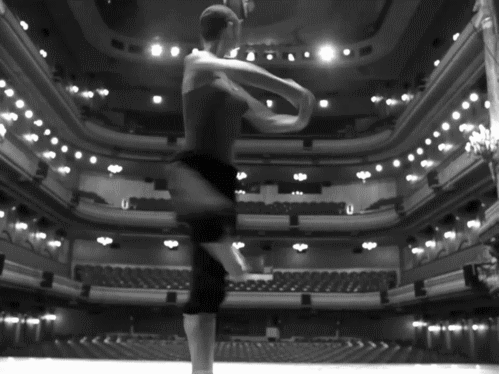
One of the best known ballets, Swan Lake, was born in St. Petersburg at the end of the 19th century. It was choreographed by the French Marius Petipa and the Russian Lev Ivanov. By the time Petipa, who is considered the most influential choreographer in ballet history, got interested in choreographing parts of Swan Lake, Lev Ivanov, a humble ballet master assistant at the time had already put together all the Lake scenes and engaged the best ballerina in dancing Odette’s part for him. It was 1895 and the best ballerina in St. Petersburg was an Italian, Pierina Legnani. Famous for her furious fouettés, she was allegedly capable of doing 32 fast and stunning turns in one take.
Petipa set out to steal the prima for his Black Swan parts, but Legnani refused to betray Ivanov, with whom she had already been rehearsing the White Swan. She suggested that she could dance both parts. Never before had one ballerina danced the adversaries’ parts. In her charming, imaginative, and well researched account of the history of ballet, ABC of Ballet, Russian theater critic Yulia Yakovleva narrates the fictitious dialogue between prima ballerina and famous choreographer. She fashions their conversation as a plot between two naughty kids. In response to Legnani’s suggestion, Petipa grinned and promised to come up with Black Swan choreography so complex that Legnani would have to let go of the White Swan part, composed by the unknown Ivanov. Legnani grinned back and broke into her contagious Italian laughter, betting she’d master both. And master it she did. Swan Lake became the first ballet with one ballerina dancing the adversaries’ parts and Legnani’s signature 32 fouettés became the benchmark for all classical productions to come.
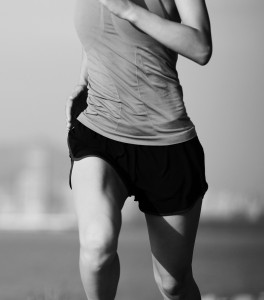 Like most intricate ballet tricks, fouettés rely on laden, hard-working thigh musculature. There is an old ballet legend about a ballerina who managed to break the legs of a bunch of scamps who surrounded her by performing a fouetté. True or not, those famous Legnani pirouettes do require some very fit thighs. The same goes for the arresting dips in which a partner holds a seemingly feather-weight ballerina. For the female dancer this is not a moment to catch her breath; it is quite the opposite. She is actually holding herself with her thighs. If she relaxes, this fragile composition may collapse.
Like most intricate ballet tricks, fouettés rely on laden, hard-working thigh musculature. There is an old ballet legend about a ballerina who managed to break the legs of a bunch of scamps who surrounded her by performing a fouetté. True or not, those famous Legnani pirouettes do require some very fit thighs. The same goes for the arresting dips in which a partner holds a seemingly feather-weight ballerina. For the female dancer this is not a moment to catch her breath; it is quite the opposite. She is actually holding herself with her thighs. If she relaxes, this fragile composition may collapse.
Both marathoner and dancer require an enormous stamina but the dynamics of their movements are very different and seem to find reflection in the lineament of their legs. The runner’s contact with the ground seems brief and perfunctory; she uses the ground to push against, up into the air. Her leg contour seems to mimic this upward movement. Calves do the heavy work; it’s the thighs that gracefully cut through the air and steal the show.
Though dancers seem to be floating in the air just as much, their relationship with the floor is by far more intimate. Of all other crafts, a ballerina’s pointe work most resembles calligraphy. Calligraphy is wedded to the surface. It must be for that reason then that ballet dancers usually talk about theater stage floors with a lot of sentiment. Tango and salsa poetic folclore also refer to “la pista” (the dance floor) constantly, so that it feels like the dance floor is yet another protagonist, rather than a mere part of the venue. As if in support of this dynamic, a ballerina’s legs are outlined differently, drawing strong downward visual vectors. All the heavy work is performed by the thighs, shadowed with a stiff tutu, while the calves aggrandize the calligraphy of pointe technique.
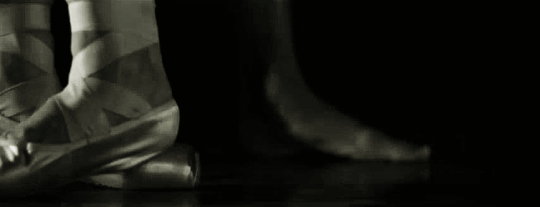
All this is indeed purely symbolical. From a biomechanics and somatic point of view, both, marathoners and dancers engage their thighs and calves equally hard, not to mention that both largely depend on their core muscles. A female marathoner with fouetté thighs is a common scenario and vice versa. This text is not a kinesiology insight, but rather a portrayal of the visual differences of a ballerina and a runner. The difference that is so vivid it once made its way into garment industry professional jargon and helped women to better understand and present themselves.
For non-athletic women, marathoner gams translate into legs that look naturally longer in proportion to the torso. It also may result in spiky angular knees. More often than not all this will happen at the expense of neck length. This build opened the door for the millennium length pencil skirts, wildly exposed knees, boxy cuts, and athletic-utility footwear. All of these are used not only to help marathoner’s gams take center stage, but also to play down the challenges that come with them. It is pretty much a Kate Moss-driven image that modern fashion feeds to us these days.
Now, what about fouetté thighs? The term covers a large group of women including those who never came close to a ballet barre. It basically means a thigh that is disproportionally longer or heavier in relation to the calves. It may be a lazy, wobbly, ‘carbo’-thigh, but it may also be a strong and fit one. The imbalance of upper and lower parts of the leg creates the short leg effect. In fact, many women with fouetté thighs do get them into some very nice, lean state, but once they have clothes on, as paradoxical as it may sound, the anatomical nature of their bodies announces itself, ruining all their efforts. It becomes particularly vivid when wearing styles designed with marathoner legs in mind, dominating the fashion scene today. Women, young girls especially, confuse this with being overweight. They head straight into eating disorders and body image problems. I have also known athletic and fitness-minded women who were disappointed with themselves for not getting the desired results (aka marathoner gams) after months of rigorous training and dieting.
The fouetté thigh is a typical characteristic of Siren’s beauty type. Since it does not fit very well into the gender-neutral modern fashion, talking about outfitting them and fighting the short legs effect require a longer explanation and more ballet references.
On the stage, hardworking ballerina thighs look svelte against a bulky ballet tutu. Ethereal looking from your dress circle seat, it is actually a clumsy piece of costume that feels more like an armory than a breezy frock. But the tutu’s bulk helps to abate the visual disproportion between a heavier thigh and swanky calves, while the pointe technique elongates the leg. None of this seems to be useful outside of a ballet academy, but don’t be so quick to dismiss this gear as it offers some great styling clues.
Heavier ballet thighs will succumb to bulky, heavier fabrics such as boiled wools, tweeds, or leather. For a bare leg look during the summer, starchy pique cottons come to rescue. These fabrics will mimic the tutu’s thigh-abating effect, without feeling costumey. Lots of women complained earlier that they don’t like heavy fabrics and prefer light weight jersey. With jersey, you will need to go one-piece and mimic Greek chiton. I will talk more about that another day.
Shoe-wise, keeping your footwear neutral to skin tone does help, but trust me, I didn’t keep you here for that long to give you this timeworn advice. I want go a little further.
THE HIGH-TECH FACTOR
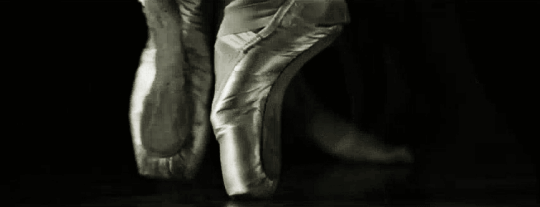
For years fouetté thighs were restricted to heels. Tyranny of heels was a complaint from one of my readers that inspired my Amazon-Siren beauty type concept in 2010. The SS 2013 rockstud Valentino shoes put pointy flats back on the map and made the lives of so many of us with fouetté thighs ever so easier. Doesn’t it feel like those Valentino rockstud flats have been around forever? Come to think of it, it’s only been three years!
To help you understand how they replaced the heels and why numerous ballerina flats B.V.(before Valentino) never worked, I will have to make another deep dive into history of ballet.
While ballet is an antique form of art, originating in the Italian Renaissance in the 15th century, the pointe technique is a relatively new phenomenon. It is about 200 hundred years old. The pointe started humbly with dancers who performed in soft silk slippers balancing on their toes for a fraction of a second. The audience reacted wildly and despite the enormous risk of serious injuries, ballet dancers strived for more and came up with numerous tricks: firm inserts in their shoes and glue poured over silk slippers to make them harder, boxier, and stiffer. Ballet shoe makers took all these little DIYs to the next level and included the box in a ballet shoe, made of layers of fabric that contained the toes. This allowed dancers to perform more difficult routines and pushed classical ballet further. This growth spurt took place in the late 19thto early 20th century, a time marked with enormous technological developments. Newspapers at the time discussed ballet techniques along with the steam engine and other technological advancements. The highest praise for a ballerina at the time was “the steal pointe shoe.”
All this translates into a sophisticated, high-tech shoe required for a fouetté thigh working its way into the modern fashion.
It’s nice if you can put up $800 for Valentino pointed rockstud flats, but if you can’t, the good news is that ever since pointed flats were introduced by Valentino in 2013, the market has been saturated with various models, from pumps to Keds and shows no sign of slowing down. One hopes that hard soled, pointy flats will stick around, because they help fight the short legs effect for fouetté thighs while granting us the comfort of the flats. They are just as essential for fouetté thighs as the bra is for anything B+. But, in case pointed flats enter into a market fatigue zone, you might need to stock up.
I meant this entry as one in a series of articles, plotting my way to a comprehensive explanation of my Amazon-Siren beauty concept. Each article will deal with different body parts that affect which beauty type you belong to. Eventually it should help you navigate the Amazon-Siren beauty concept and nail down the intricacies of your personal style. Marathoner’s gams are one of the key features of an Amazon beauty type. Fouetté thigh is one of the key features of a Siren beauty type.
The pelvis setup defines whether we have fouetté thigh or marathoner gam. It is all very connected to what is going on in our torso, and my next write up will be elaborating on this link. For now I just wanted to say that working out our fouetté thighs is like brushing our teeth. It is something that needs to be done on a regular basis. Sorry, guys. The bad news is that working our fouetté thighs hard does not mean we will stop having the short legs problem once we change into our everyday non-yoga clothes that are largely inspired by the marathoners gams these days. The good news is that I am here to share with you everything I know about mastering fouetté thighs sartorially and enjoying yourself in the process, while the fashion scene realizes that we, Sirens are here to stay.


Oct. 30, 2010
3601
Most of us, post-Soviet women had our prom dresses "made out of curtain" or so it looked. And it meant the same thing the curtain dress meant for Scarlett O'Hara: it symbolized our will to survive.
This site uses Akismet to reduce spam. Learn how your comment data is processed.
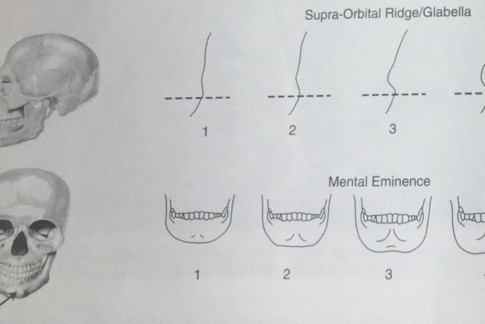
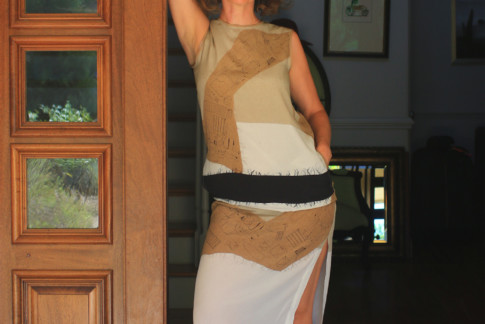
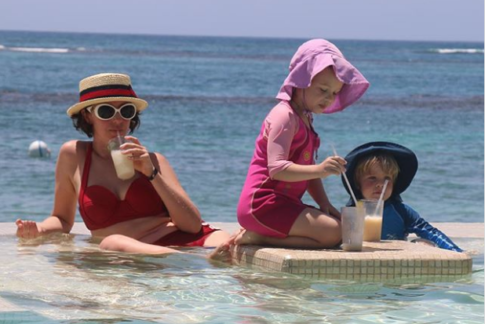
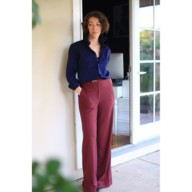





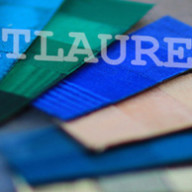


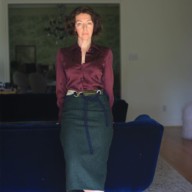


‘200 hundred’ – typo